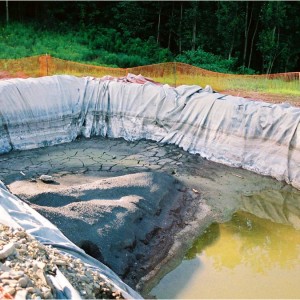Analysis: Despite a Drying and Flooding Planet, Cancun Climate Negotiators Anticipate Scant Progress
Without water as part of the equation, there can be no long-term solution to climate change.
By Keith Schneider
Circle of Blue
On November 29 representatives from 190 countries will be in Cancun, Mexico for the 16th Conference of the Parties under the United Nations Framework Convention on Climate Change. Late last week, following a two-day Major Economies Forum on Energy and Climate in Washington, the Obama administration’s chief climate negotiator told reporters not to expect too much.

“I would describe myself right now as neither an optimist nor a pessimist,” said Todd Stern, the State Department’s special envoy on climate, adding that there won’t be any “enormous leaps forward” in Cancun but “real and concrete steps” can be made.
Exactly what those could be has not come into focus, though Stern and other negotiators also noted that unless something tangible occurs at the Cancun meeting, the credibility of the UN process will weaken. “The process can’t continually stalemate and remain the locus of activity,” Stern said.
A year ago, of course, global anticipation of a diplomatic breakthrough was high enough to attract the American president, the Chinese premier, and over 100 other heads of state to the Copenhagen climate summit. More than 125,000 people from all over the world marched for climate action on a cold and sunny Saturday afternoon. Thousands of journalists and producers filed reports from a crowded media room at the Bella Center, itself so full that security forces limited access.
Yet what was clear in Copenhagen, just as it was plain in the two other international climate conferences I’ve attended — in Barcelona in 2009 and in Tianjin last month — is this: The very same governments that produced a near stalemate on a climate treaty are simultaneously supporting global alliances of powerful energy companies to develop and consume the planet’s remaining reserves of fossil fuels.
Let’s just put it this way. The executives of those companies are perfectly content with the grudging pace of climate negotiations. Nobody else should be. The equatorial regions of east Africa are drying up as fast as the tinderbox hills and water-scarce fields of Australia’s Murray Darling Basin. Both poles are melting along with the glaciers of Greenland and the Himalayas. South Dakota this year experienced floods and hail and fierce storms that formed the most erratic and dangerous weather in its recorded history.
Climate change, in fact, is producing an emergency, except in the front offices of the world’s major fossil fuel companies and the legions of elected and appointed officials they’ve helped to install in public office. And as Circle of Blue reports in its Choke Point: U.S. series this year, and in its other projects, there is no more visible evidence than the effect climate change is having on the planet’s reserves of fresh water. In the U.S., persistent drought on the Colorado Plateau has so significantly lowered water levels in the Colorado River and Lake Mead that Hoover Dam is fast approaching the day when it will no longer produce any power. In Myanmar and Bangladesh, record floods this year displaced hundreds of thousands of people.
The damage to freshwater supplies is the most personal consequence of climate change around the world. It’s true that a number of nations have initiated important industrial programs to lower carbon emissions by fostering the switch to cleaner energy sources. China, for instance, has gained international renown for the speed at which it’s developed an alternative fuels manufacturing and power-generating sector.
It’s not nearly enough, though, to slow the planet’s warming. That’s because the bigger money in the industrialized world involves producing and consuming carbon-emitting coal, oil, and natural gas.
Nowhere is that more true than in China, the fastest growing energy consumer on Earth. Royal Dutch Shell, for instance, is collaborating with CNPC, the Chinese National Petroleum Corp., to develop big new natural gas reserves in the deep shales below Sichuan province in a project aided by the U.S. Department of Energy. Sasol, the big South African oil company, is negotiating to build a huge water-consuming refinery in Ningxia province to turn coal into liquid fuels. The world’s engineering firms are lining up to help China turn a proposal into an actual project to build a 2,000-mile long pipeline from the Bohai Sea inland to desperately dry Xinjiang province to provide coal mines with process water and power plants with cooling water.
Though China has announced its 2020 commitment that 15 percent of its electricity will come from renewable alternatives, a number that is up from seven percent this year, roughly 70 percent will still come from the 3.5 billion to 4.5 billion tons of coal it is expected to consume annually in the same time frame.
And China’s oil and gas consumption is also climbing rapidly. That’s why here in North America, China is joining India and Korea on a fossil fuel buying spree. China and Korea have big stakes in oil production from Canada’s tar sands, where they have joined American, European, and Canadian companies in spending $15 billion annually. The Wall Street Journal last week reported that Coal India Ltd., a state-controlled entity, is talking to Peabody Energy and Massey Energy Company to buy American mines.
Grist last week reported that “Reliance Industries of India bought a $3.4 billion stake in three U.S. shale gas companies earlier this year. In March, India’s Essar Group acquired Trinity Coal for $600 million; the company has active mines in Kentucky and West Virginia.
Grist also noted that the China National Offshore Oil Corporation Ltd. agreed in October to pay up to $2.16 billion for a 33.3 percent stake in Oklahoma-based Chesapeake Energy’s interest in the Eagle Ford deep shale natural gas play. Chesapeake’s chairman, Aubrey McClendon, is an important contributor to Oklahoma Republican Senator James Inhofe, one of Capitol Hill’s most ardent opponents of climate action.
In short, the Cancun climate summit reflects two opposing theaters of action. In one, climate negotiators are getting tangled-up in the soft lines of national distrust and diplomatic nuance. In the other, their governments and domestic energy companies are busier than ever drilling, mining, processing, and producing the dirty power that perpetuates the fossil fuel era.
Somehow, climate advocates have to find a way to help the negotiators find a path to agreement, while convincing the world of the emergency the fossil fuel industry is determined to make worse.
Keith Schneider is senior editor of Circle of Blue. Contact Keith Schneider
Circle of Blue’s senior editor and chief correspondent based in Traverse City, Michigan. He has reported on the contest for energy, food, and water in the era of climate change from six continents. Contact
Keith Schneider









Leave a Reply
Want to join the discussion?Feel free to contribute!